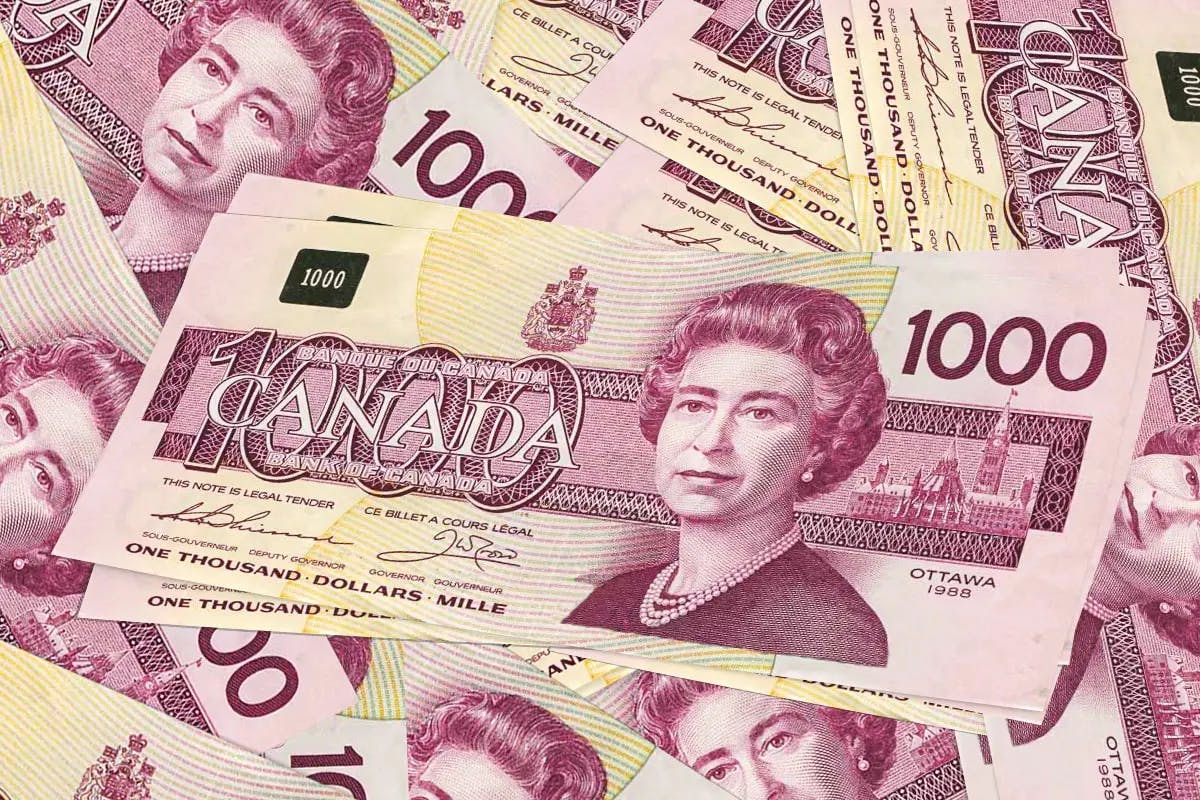5 Things You Might Not Know About the Canadian 1000 Dollar Bill
By JC Pittman | Published on 12 Dec 2022

We’ve reached the end of the road in our Banknotes of Canada series. If you thought we were done with the Canadian 100 dollar bill, then we have a list of five things you don’t know about the Canadian 1000 Dollar bill. The fact that Canada even had a 1000 bill is something noteworthy for many Canadians.
In the final chapter of our Canadian Banknote Series, we will explore the history of the potentially forgotten Canadian 1000 Bill. Did you know that this bill has been issued in four of the Bank of Canada’s official banknote series? Well, now you do, and we’ll jump into five more things about the history of the Canadian 1000 dollar bill.
The First Series: 2 Canadians join a Royal cast on the largest denomination banknote
The Bank of Canada’s “First Series” features a cast of Royal faces for the portraits on the Victorian-era inspired banknotes on all but two of the banknotes: the Canadian 1000 dollar bill and the short-lived Canadian 500 dollar bill. Did you know that there was a Canadian 500 dollar bill?
As you are likely well aware from reading our Canadian bank note series, Canadian currency and banknotes are constantly in flux and not solely through exchange rates. The Bank of Canada’s “First Series” was only issued for two years, 1935-37. But if you were fortunate enough to actually possess one of the largest denominations of banknotes in 1935, you were greeted by one of two non-royal family portraits of famous Canadians.
Canada’s problematic first Prime Minster, Sir John A. MacDonald’s portrait was initially used on the Canadian 500 dollar bill. While Sir Wilfred Laurier started his banknote journey as the portrait on the Canadian 1000 dollar bill before eventually finding his way onto the Canadian 5 dollar bill. Laurier will finish his time as a portrait on Canadian banknotes, as he will soon be replaced on the Canadian 5-dollar bill by another extraordinary Canadian nominated by Canadian citizens.
An allegorical engraving of “security” was the engraving image chosen for the obverse of the “First Series” Canadian 1000 dollar bill.
Security Indeed: the value of a Canadian 1000 dollar bill in 1935
In 1935, much of North America struggled through the Great Depression, including Prairie farmers, who suffered through “The Dust Bowl” like their American counterparts. The unemployment rate was over 12% nationally and remained above that number until World War II began.
Did you know that if you possessed a Canadian 1000 dollar bill in 1935, you had THE definition of security? According to zippia.com, the average annual salary in 1935 was $471, while high-earners made $1,070 annually.
What was the value of one Canadian 1000 dollar bill in 1935 compared to 2022? After adjusting for inflation, $1000 in 1935 is worth $21,068.49 in 2022. If you possessed a Canadian 1000 dollar bill in 1935, security was something you possessed that many Canadians, then and now, only dream of.
The Canadian 1000 bill is NOT legal tender, but It still holds value
Did you know that no Canadian 1000 bill in circulation is legal tender? If you didn’t know this, you’re not alone, as an Ontario man found out in 2020.
Although Canadian 1000 dollar bills were printed up to the year 2000, you cannot exchange a Canadian 1000 dollar bill for goods or at a bank, regardless of the series or when it was printed.
However, you don’t need to throw the banknote out, frame it as “worthless” currency, or go bank to bank like the Ontario man did. The Bank of Canada readily accepts out-of-print and no longer legal tender bills and will give you the face value in return.
However, rather than exchange your non-legal tender Canadian 1000 dollar bill for the same value from the Bank of Canada, you might want to get it appraised as some collectors may want to add your banknote to their collection and pay more than the Bank of Canada for it.
Passing it on! colour changes from one series to the next & the lasting impact
Did you know that the Canadian 1000 dollar bill has been issued in four of the Bank of Canada’s official banknote series’? And did you know that the Canadian 1000 dollar bill was the banknote that first used red as its colour before red became synonymous with the Canadian 50 dollar bill?
Both of these statements are true, and like all banknotes, the Canadian 1000 dollar bill underwent changes during the first three official Bank of Canada banknote series.
While Sir Wilfred Laurier and the allegorical image of “security” returned as portrait and obverse on the “Bilingual Series,” the colour of the Canadian 1000 dollar bill shifted from the green or olive used in the “First Series” to red in the “Bilingual Series.”
Green eventually became the primary colour associated with the Canadian 20-dollar bill, while red was soon to be adopted by the Canadian 50-dollar bill, both having their origins on Canada’s largest banknote.
The “Scenes of Canada” Series marked the Bank of Canada’s first endeavours in crafting a sense of national identity through banknotes. A portrait of Queen Elizabeth II replaced Laurier, as were all of the banknotes in the “Canadian Landscape” series, while a landscape featuring a covered bridge on a path through the Village of L’Anse-Saint-Jean, Quebec and the Saguenay River Fjord.
One Last Appearance: causing controversy with birds
After reading our Canadian banknote series, you know Canadians have found many ways to craft national identity, interpret the imagery of banknotes, and find all sorts of things to complain about. When the Bank of Canada chose “Birds of Canada” as their next subject for an official banknote series, they did so intending to create politically neutral and non-problematic banknotes.
And yet, did you know Canadians created an issue over birds on banknotes? The source of controversy for some people was the Canadian 1000 dollar bill, which would be featured in its last banknote series ever, issued in 1992.
If you have seen an actual Canadian 1000 bill, this is likely the version of the banknote you’ve seen. Queen Elizabeth II returns as the portrait of the banknote, which features a purple hue and Parliament’s Peace Tower with a Maple Leaf flying above it on the obverse.
In its last version, the Canadian 1000 bill caused controversy over the bird selected for the banknote’s reverse engraving.
The bird initially chosen for Canada’s largest but least-common banknote was the Spruce Grouse. However, the Spruce Grouse has a nickname derived from its real-world defence mechanism against predators: remaining motionlessness. The controversy was not over the metaphorical conclusions people could extract from the Spruce Grouse. Instead, it was that the bird’s nickname is “fool hen.”
The nickname “fool hen” caused enough controversy in the late 80s and early 90s that the Bank of Canada decided against using the Spruce Grouse, opting for a pair of Pine Grosbeaks. The “Birds of Canada” Canadian 1000 dollar bill is likely to be the final banknote of a $1000 denomination in Canada for the foreseeable future and potentially ever.
